Windows 10 provides the option to turn OFF Automatic Updates, which allows you to install them later, whenever you are ready to install updates on your computer.
If you do not see the option to switch-off Auto-updates on your computer, it is most likely that you are using an older version of Windows 10.
In such cases, you can try to update your computer to the latest version of Windows, after which the option to switch OFF updates should become available on your device. If not, you use methods 2 & 4 as provided below.
Stop Auto-updates in Windows 10
Microsoft releases, monthly Quality Updates (maintenance and security) and Feature Updates twice in a year (spring and fall).
The Quality Updates can be delayed or deferred up to a period of 35 days on both Home and Pro Versions of Windows 10 using the following methods.
1. Set Metered Connection
An easy way to Stop Windows 10 from automatically downloading updates is to set the Wi-Fi connection on the computer as being Metered.
1. Open Settings > click on Network & Internet Icon.
2. On Network & Internet screen, select Wi-Fi in the left-pane and click on your Wi-Fi Network Name in the right-pane.
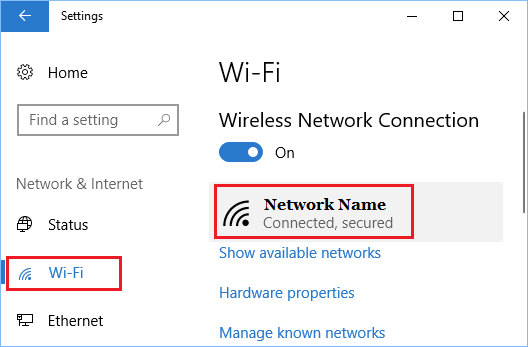
3. On the next screen, scroll down and Enable Metered Connection option.
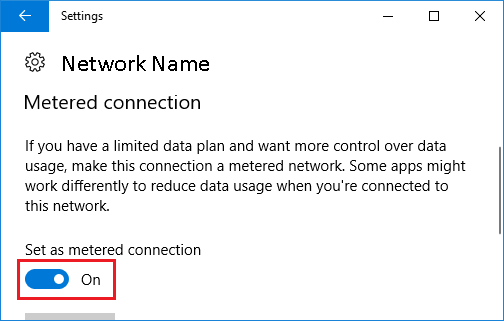
If you are connected to Ethernet, select Ethernet in the left pane, click on your active Ethernet Network in the right pane and enable Set As Metered Connection option on the next screen.
2. Disable Automatic Updates Using Administrative Tools
If you are using an older version of Windows 10, you can disable Auto Updates by signing into your Admin Account and following the steps below.
1. Right-click on the Start button and click on Run.
2. In Run Command window, type services.msc and click on OK.
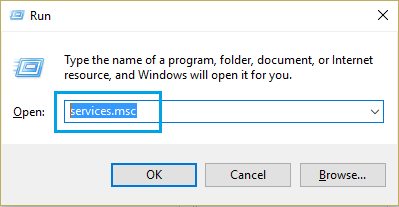
3. On the Services screen, right-click on Windows Update and select Properties in the menu that appears.
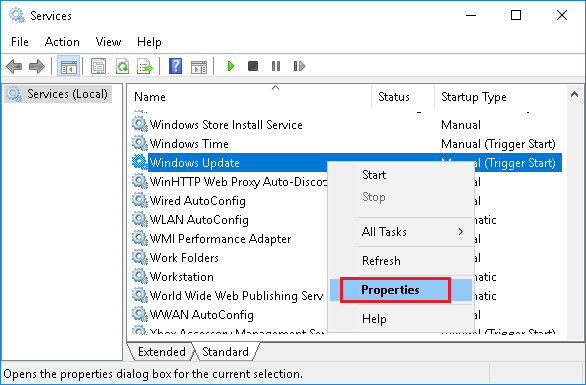
4. On Windows Update Properties screen, click on Startup type down-arrow and select the Disabled option.
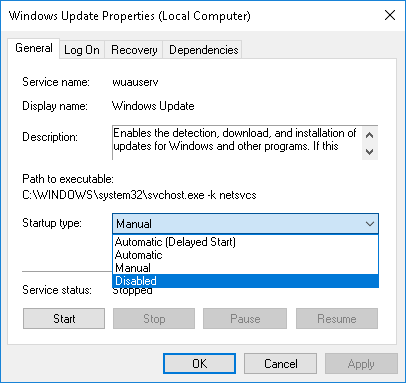
5. Make sure you click on Apply and OK to save this change on your computer.
After disabling Updates using this method, it is important that you periodically check for Updates by going to Settings > Update & Security and clicking on Check for Updates.
You may see a message reading “updates were stopped on your computer” or similar. In such cases, click on Retry to download and install available updates on your computer.
If your computer has missed multiple updates, you may have to click on Check for Updates multiple times, until your computer says that it is up to date with Updates.
3. Delay Auto Updates up to 35 Days
As mentioned above, Microsoft provides the option to delay or pause Quality updates up-to 35 Days.
1. Open Settings > click on Update & Security Icon.
2. On Update & Security screen, select Windows Update in the left-pane. In the right-pane, scroll down and click on Pause updates for 7 days option.
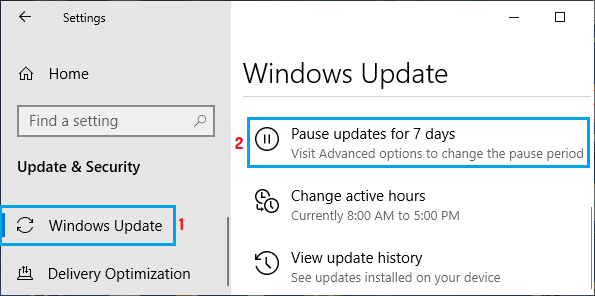
This will Pause Updates on your computer for a period of 7 days.
If required, you can keep clicking on Pause Updates for 7 more Days option, until you reach 35 days and Pause Updates option becomes grayed out.
4. Delay Auto Updates Until a Selected Date
You can go to the Advanced Update Options screen on your computer and delay the updates up to a selected date.
1. Open Settings > click on Update & Security Icon.
2. On Update & Security screen, select Windows Update in the left-pane and click on Advanced options in the right-pane.
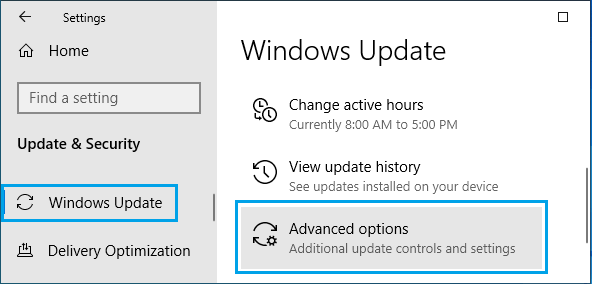
3. On the next screen, click on Pause until drop-down and select the Date up to which you want to stop Windows Auto Updates.
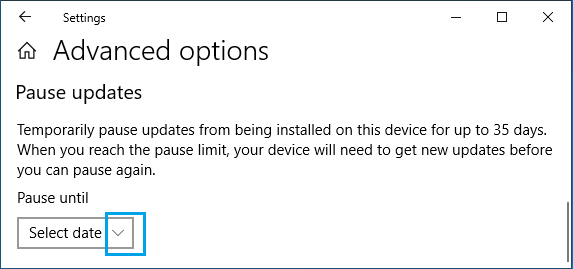
This will delay Windows Updates on your computer, until the specific date that you selected in the drop-down.
When the selected date arrives, Windows will automatically download and install the available updates on your computer.
Why Users Want to Disable Auto Updates
A common reason for disabling Auto Updates on a Windows 10 computer is to prevent the possibility of your work being interrupted during working hours.
Another reason for disabling Auto Updates is to prevent chances of an Update causing problems or becoming incompatible with Apps and programs installed on the computers.
After disabling or delaying Auto Updates, it is recommended that you periodically check for Updates and install them manually on the computer.